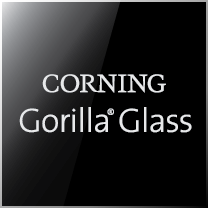By Michael Kunigonis, Vice President and General Manager, Corning Automotive Glass Solutions
You’ve probably heard of cold-filtered beer or cold-brewed coffee. Both take a traditional process and turn it upside-down to simplify manufacturing and enhance flavor. It’s a simple idea, really. Take a process that normally requires heat and keep it cold instead.
At Corning we wondered if we could apply similar thinking to shaped glass, a product that traditionally requires expensive hot molding and tooling. Earlier this year our scientists and engineers were granted a patent for this idea-turned-reality, something we call Corning® ColdForm™ Technology.
If you haven’t heard of our ColdForm glass yet, I’m betting you will soon. Auto interior design trends are shifting toward smartphone-like interactivity and design. In response, the automotive supply chain is seeking cost-effective and high-quality product and process solutions. Our ColdForm technology addresses both. In fact, next week at CES 2020, we aren’t just talking about this technology, we’re showcasing this technology.
In today’s car, displays incorporate everything from navigation to infotainment to critical control functionality. And automakers are driving the evolution from flat to curved display systems to create a sea of natural curves across consoles and cockpits. Each curve in a console poses a maintenance challenge for three important display attributes: optical clarity under ambient light, defect-free high resolution, and durability. This is exactly where our solutions come in. Our technology enables us to take thin, optically advantaged, durable glass and bend it at room temperature to cover curved surfaces; a simple idea that delivers what the industry needs.
Historically, flat glass has been shaped by reheating the glass in a mold, followed by sagging or pressing the glass to take its shape before cooling. Besides the additional expense of hot forming, this process also introduces challenges when solving for our three attributes. Optical and decoration treatments can’t survive the reheating process and must be applied after forming. Then the reheating process combined with chemical strengthening for durability diminishes part-to-part geometric uniformity. This complicates module assembly, introduces mura once optically bonded to a display, and adds cost.
Our ColdForm technology gives us three unique benefits that deliver on those three critical display attributes:
- We avoid the cost of hot forming
- We inexpensively apply optical and decoration treatments when the glass is flat
- We enable the supply chain to optically bond displays to the cover glass flat at high yields
Join us on our journey.
The future of driving awaits.
For OEMs exploring the promise of autonomous driving, Corning® Fusion5® Glass is the only windshield technology. Learn more by clicking the link below, or call at 607-974-1439.
